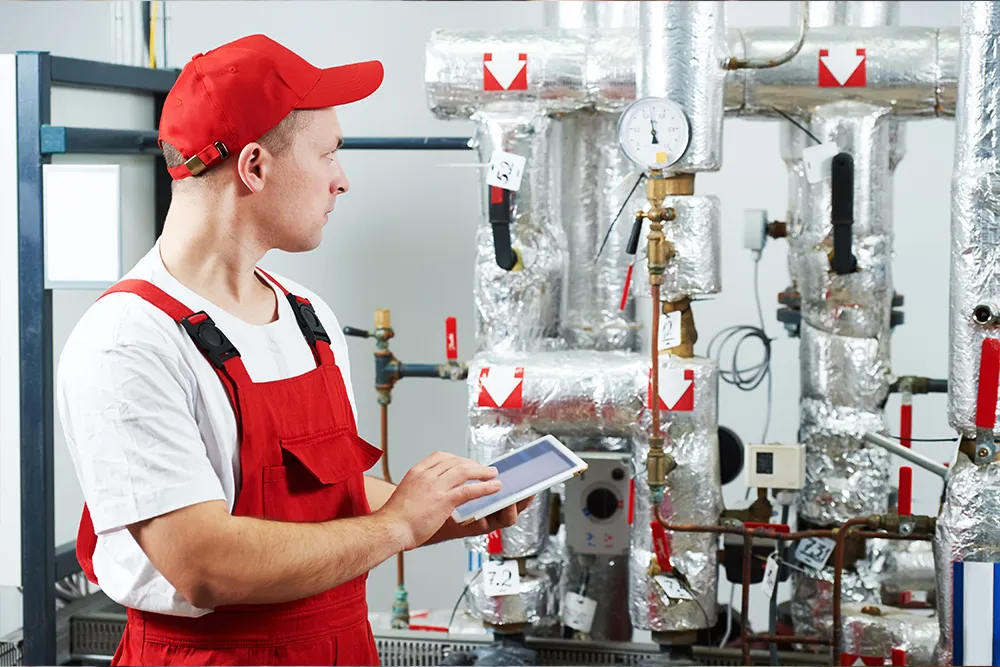Through complex production and transportation systems, valves start, stop, and regulate the flow of liquid and even gaseous material, often across long physical distances. Inspectors use detailed valve inspection checklists to ensure that they are in good working condition and are used by design, installation, testing, and operation regulations. In addition, Fire Safety Valve Pressure Ratings perform pressure control and pressure relief functions. Especially in the fire-fighting context, these valves play a vital part in ensuring safe and controlled water flow during fire management activities.
Fire Pump Pressure Relief Valve
Pressure Relief Valves (PRV) help ensure that the water pressure does not exceed the stipulated level in fire pumps. Excess pressure can damage the pump, pipes, and fire-fighting equipment and result in accidents if pump components or pipes rupture. Fire engine relief valves are designed to open and close based on pressure levels automatically. When the pressure threshold is exceeded, the valve allows excess water to be diverted to an auxiliary route, enabling the main flow to remain within control levels. Once the pressure comes under control, the valve automatically closes to maintain the desired pressure level.
Pressure Relief Valves (PRV) – NFPA 20 Compliance
Pressure-reducing devices such as pressure relief valves help ensure the safety of routine operations and are regulated by several codes and standards. These standards outline specifications regarding how these valves must be designed, what level of pressure they must be able to withstand, and how they are to be inspected, tested, and operated.
Fire Safety Pressure relief valves are only needed when the pressure within a system is beyond the allowable thresholds. Ideally, when configuring a pump system, engineers must keep in mind the pressure the system can withstand and design the pumps accordingly.
The National Fire Protection Association (NFPA) is an international body created to reduce accidents, injury, death, and damage to property from fire and electrical hazards. NFPA prescribes that centrifugal pumps’ pressure relief valves and diesel pumps must be installed. In cases where the total of the maximum static pressure and one hundred and twenty-one percent of the churn pressure is higher than the pressure threshold of the parts being used in the system.
Usually, pressure relief valves are not allowed on electric pumps. The only exception is in cases where electric pumps are used in conjunction with variable speed drivers, and these speed drivers pose the risk of failure.
Pressure Control Valves (PCV) – NFPA 20 Compliance
Pressure control valves are also designed and installed in fire protection systems to manage water pressure in flowing and non-flowing states. These are also referred to as residual and static conditions. These valves are pilot-operated and help control water pressure downstream towards a specific valve. They help apply water pressure to a diaphragm that opens and closes according to pressure levels. This setup includes a pilot sensing line that connects the diaphragm and is linked upstream or downstream to adjust the pressure on the diaphragm.
Other Fire Protection Compliance Standards
Several other pressure control mechanisms, including pressure control valves used downstream of the isolation valve, must be installed to align with standards outlined in NFPA 13 and NFPA 14. Conditions for pressure regulating valves and maximum pressure allowable at the hose connections are defined in NFPA 14. Sometimes, additional piping is required to install distinct pressure regulating valves for hose connections of class I and II specifications.
WOG and WSP ratings
Fire Safety Valve Pressure Ratings are readings provided on devices to specify the pressure they are designed to withstand. Pounds per Square Inch (PSI) or Pounds per Square Inch Gauge (PSIG) is the standard reading used to indicate how much pressure the valve, component, or pipe can withstand based on the pressure exerted by the liquid or gas used in a system. There are ambiguities related to these terms and specifications because valves are often used for various purposes. For instance, valves designed for fire protection often find application in oil and gas, chemicals, and other water-based systems. The different challenge is that terminology is varied; typical industry measurements are expressed in terms like WOG, WSP, or SWP with the numeric readings alongside.
At higher temperatures, metals become less stable and weaker; this means they can handle less pressure. Conversely, the same metals can withstand higher pressure levels at lower temperatures because they are more robust.
WSP or Working Steam Pressure (also called Steam Working Pressure) is a rating that indicates the maximum pressure that the component can handle from steam or hot water. For example, a valve with the specification 50 SWP can control 50 PSIG from steam.
When materials are used at lower temperatures, they usually range between minus twenty-nine and thirty-eight degrees Celsius, as with water, oil, gas, etc. The Water, Oil, Gas (WOG) rating is used to indicate the pressure threshold of the valves. The Manufacturer’s Standardization Society outlines protocols based on which temperature are pressure ratings are expressed and uses Cold Working Pressure (CWP) to indicate the pressure the valve can withstand at average temperatures.
Valve Inspection Checklists
The complex pressure, temperature, and applicable standards and specifications for valves make valve inspections vital. These inspections help ascertain if the valves are installed correctly and can ensure the fire systems operate within their pressure and temperature thresholds. Modern apps like Fielda help inspectors design checklists for valve inspections; they can modify existing templates or create new ones based on their inspection needs and the evolving industry standards which govern the use of valves. In addition, Fielda enables robust GIS mapping, which helps inspectors plot and visualizes the valves in a given infrastructure setup making inspections far more accessible, faster, and more efficient. And with real-time data capture, instant reports, and dashboards, inspection teams can schedule work, collaborate and monitor work status seamlessly from their mobile devices.
